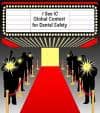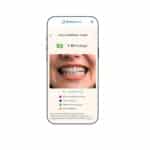William Poss, Solutions by Design;
Alex Di Sessa, Zap Lasers LLC
Connecting Orthodontists with Patients and Referrers
 |
William Poss is CEO and creative director at Solutions by Design, in Fresno, Calif. He has been active in the orthodontic industry for more than 24 years and has lectured around the world on private-practice management and marketing.
OP: What type of marketing packages do you provide to orthodontists?
Poss: Solutions by Design and Screenplay Technologies offer a “menu select” option for the development of comprehensive marketing programs. Practitioners can choose from a variety of products and services, and package them so that the total cost is paid over 12 months with no interest. This allows the orthodontist to implement marketing tactics now, realize the benefit now, and pay for it with the incremental revenue generated from the effort. We also offer a 50% reduction on the cost of most of our products and services to residents and recent grads.
OP: How, in your opinion, does branding help an orthodontic practice succeed?
Poss: We are all programmed to recognize visual elements in the form of signage and ads, and we retain them more readily than words. Graphic elements set the stage for a lasting impression. This is true in all categories of services and products.
The art of branding is very specialized. That is why major corporations allocate tens of thousands of dollars for targeted brand development and spend tens of thousands more maintaining the integrity of a developed brand. Certain graphic elements categorize product segments. Light foods, for example, are packaged in light-colored packaging, typically white with diagonal lines and light or pastel color combinations. This is universal. Heath care branding has its own set of parameters of graphic elements. Knowing how this works and paying strict attention to maintaining the integrity of the brand is the key to successful branding. When we think of Starbucks, we visualize the green brand. When we think of Chevron, we visualize the Chevron logo. We are visually stimulated beings. No brand … no message!
OP: How important is it for an orthodontic practice to have its own Web site? What type of information should be included?
Poss: There is a big misconception in orthodontics that a Web site is an independent piece of the marketing puzzle. Nothing could be further from the truth. Now more than ever, a Web site developed as part of a marketing strategy, as a tactic consistent with the balance of the program, is absolutely critical. Most practices have realized that they need a Web site. There were plenty of orthodontic companies who were targeting their Web site sales, selling a presence, and wrapping it with access for patient payments and appointment checkers. Although the technology link is a nice feature, it is far from the critical essence of the value of having a strong Web presence. Patients are much more sophisticated now than in the past. They expect not only for a practice to have a Web site, but for it to be well designed. They expect relevant information, not canned content that they see on a competitor’s site. The quality of the design and the quality of the clinical content, as well as the technology used to present the content, must be unique and well branded throughout. We focus on quality, not on sales quotas.
OP: What is Referralware, and how does it help differentiate an orthodontic practice from its competition?
Poss: Referralware is a relatively new product, and I am sure it will be the future of general practitioners (GPs) and specialist referrals. Referralware combines the power of ScreenPlay, our orthodontic case-presentation software, with an online referral system. This allows a GP to demonstrate basic orthodontic cases to a patient and instantly create a referral form, print it, and hand it to the patient, while simultaneously creating a Web-based record that is submitted to the orthodontist. Referralware also automatically reminds the patient with a series of three e-mails to call for the first appointment. Once the referral pattern is established, it is easy and fruitful for a long time.
A Portable Laser
 |
Alex Di Sessa is vice president of marketing at Zap Lasers LLC, in Pleasant Hill, Calif. He has been with the company for more than 10 years.
OP: What is your most popular laser, and what types of orthodontic applications is it used for?
Di Sessa: Zap was the first company to offer soft-tissue lasers specifically for orthodontists. We have two popular lasers for orthodontic applications: OrthoLase and StylaOrtho. The most common soft-tissue laser orthodontic applications are cuspid exposures and gingivectomies to treat hyperplasia. Other applications include frenectomies, temporary anchorage device exposures, molar exposures, and apthous ulcers.
OP: What new technologies have been integrated into orthodontic lasers in the past few years?
Di Sessa: Basic diode laser technology has not changed much in the last decade, but the technology accompanying it has made a huge impact on its ease of use, which translates to better results. Zap was the first laser company to integrate orthodontic presettings on a laser. With one touch, clinicians could be sure they are performing their most-common procedures with accurate, safe settings. With the recent introduction of StylaOrtho, Zap now offers the most portable laser on the market. With no fibers or cords to deal with, StylaOrtho allows orthodontists to conveniently treat all soft-tissue needs with a laser with minimal setup time, so doctors can devote more time to patients.
OP: How is StylaOrtho different from other lasers currently on the market?
Di Sessa: StylaOrtho is able to perform all the procedures of a diode laser without the hassle of power cords and fibers. Only 6.9 inches long and weighing only 1.9 ounces, StylaOrtho is preprogrammed with settings for eight common orthodontic procedures and the ability to manually adjust power. Each StylaOrtho tip comes with a built-in fiber, so there is no need for stripping or scoring, which is part of traditional fiber management. The laser is activated by a wireless 2.4-ghz foot pedal and is powered by a rechargeable lithium-ion battery.
OP: Which laser would you recommend to an orthodontist who has just started an orthodontic practice?
Di Sessa: If the orthodontist is looking for portability and convenience, nothing beats StylaOrtho. If the practitioner is looking for value and affordability, OrthoLase is the most affordable diode laser in orthodontics.









